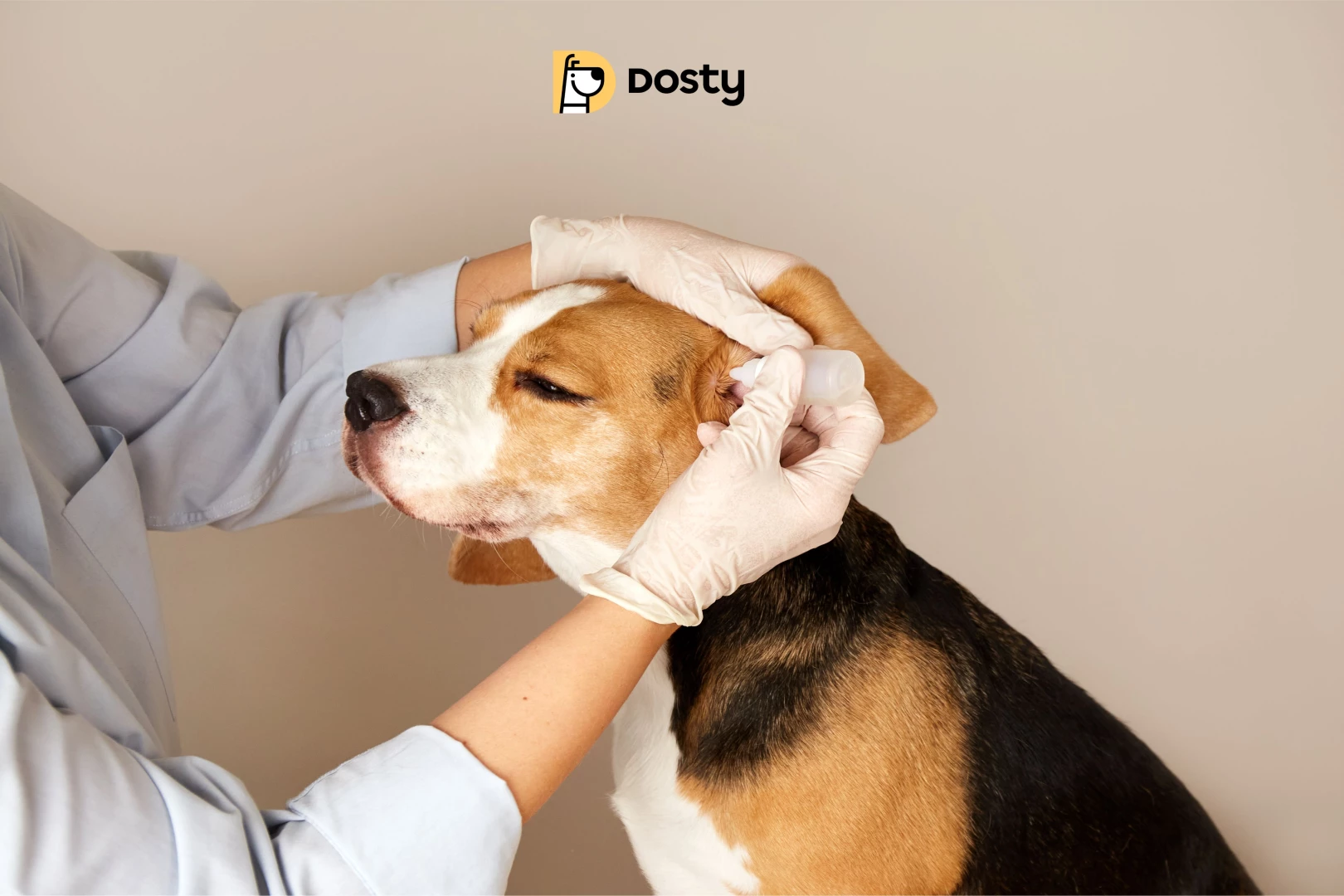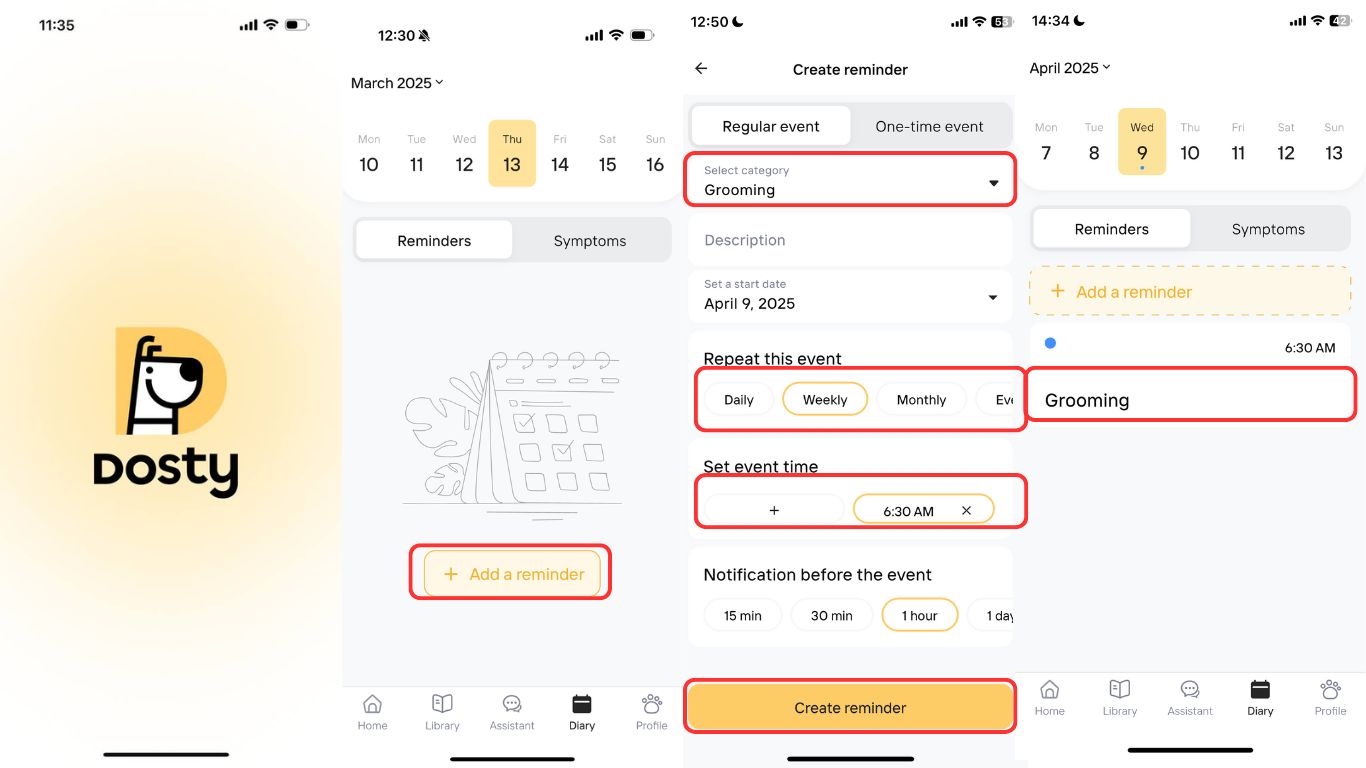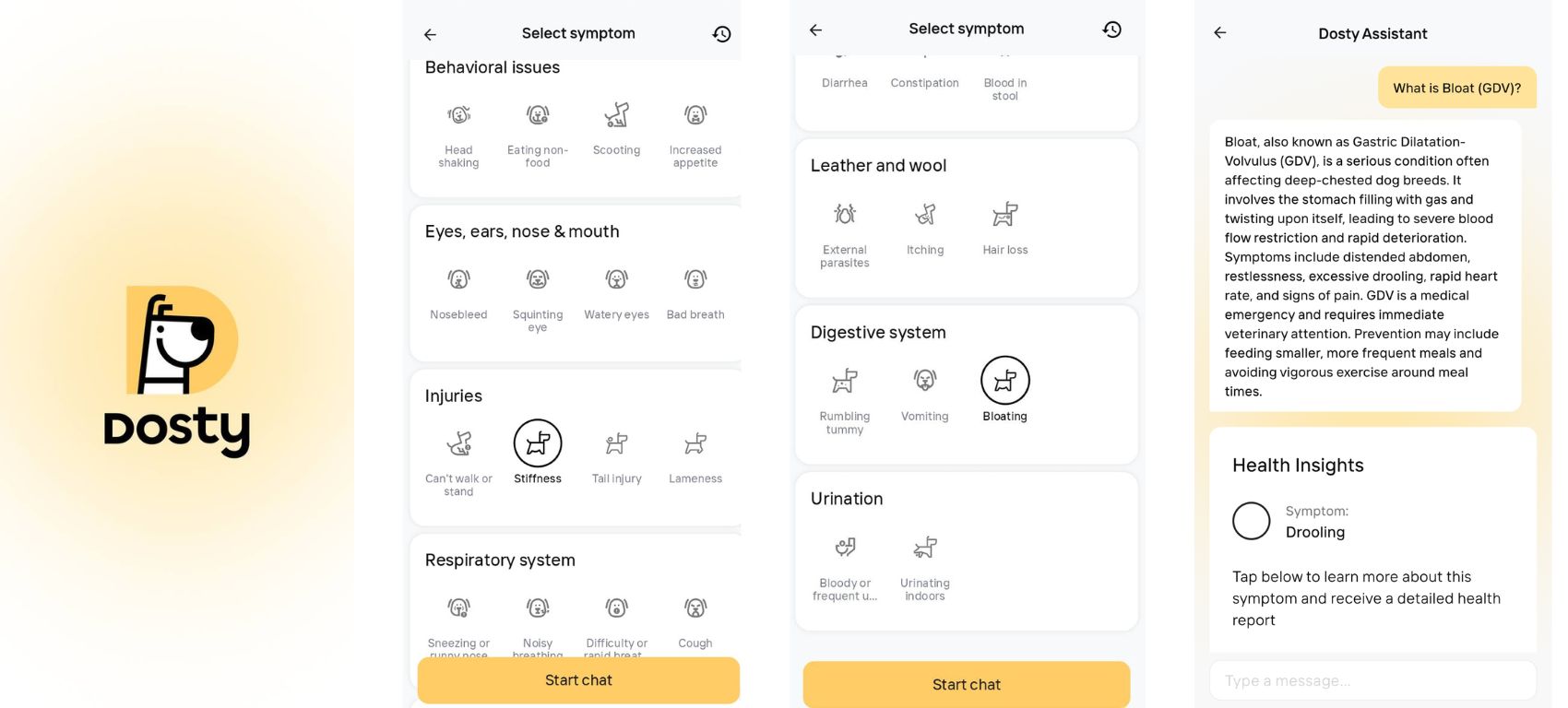On this page
How to Clean Your Dog’s Ears Safely?
Learning how to clean your dogs ears safely is vital to their comfort, overall health, and hearing. A dog's ears are sensitive and often prone to excessive wax, moisture and dirt, which can cause painful infection without the proper care. According to veterinary research, ear issues affect 15–20% of dogs each year, a large portion of which can be avoided with routine ear maintenance.
The majority of veterinarians, such as Dr. Evan Antin, DVM, advise owners examine their dogs' ears every week, cleaning when necessary. Regular ear cleans promote good health in the long term, ease discomfort and can help to avoid chronic infections that can be challenging and expensive to manage.
Having trouble to keep your dog’s ears healthy and infection-free❓
Dosty’s grooming guide will ensure you’re following vet-approved methods of ear cleaning, so there’s no need to question the routine.
📲 Download Dosty for stress-free and easy ear-care!
Why Is Cleaning Your Dog’s Ears Important?
Ear cleaning for your dog is important in order to prevent bacterial infections, yeast overgrowth, and parasites. Dogs with long, floppy ears, narrow canals, skin allergies, or that have regular exposure to water are especially susceptible.
Wax and moisture buildup provide an environment for pathogens to thrive when you are not maintaining regular care. This causes inflammation, stink and painful ear infections. Early care of the ears can lessen the risk of complications, such as ruptured ear drums or long-term hearing loss.
“Healthy ears are not just cosmetic, they’re crucial to a dog’s well-being,” says Dr. Hunter Finn, DVM.
How Often Should You Clean Your Dog’s Ears?
How frequently you should clean your dog’s ears will vary based on factors such as their breed, lifestyle, and any specific health issues.
Dogs with droopy ears, like Basset Hounds and Cocker Spaniels, are more susceptible to trapped moisture and are typically in need of ear checks, a cleaning and plucking (whenever the ear hairs are overgrown) once a week. Working dogs or those who swim often, or live in tropical climates, may need weekly ear care as well.
Breeds with erect ears, however, like Border Collies or German Shepherds, require cleaning less frequently, in the range of once every two to four weeks. Dogs with allergies will often need to have their ear care routine adjusted seasonally, during high pollen or heavy mold season.
Visual inspection is key, and if you do spy dirt, wax or pick up a mild aroma, it’s time to clean. But excessive cleaning can cause protective oils to be removed and the ear canal can be irritated so only clean when necessary as directed by observation.
When your dog’s ears need a good cleaning, it’s easy to forget, until there’s a problem❗
Dosty's reminders keep you one step ahead in keeping your dog comfy, healthy and happy.
What Supplies Do You Need to Clean Your Dog’s Ears?
Safely cleaning your dog’s ears means the appropriate supplies, those specifically made for sensitive canine skin and the unique structures in their ears.
The most crucial is veterinarian-approved dog ear cleaner that is an ear mite wash. These remedies safely dissolve wax and also help to dry up any extra moisture without irritating the ear canal. Avoid the human ear mixes unless you are told otherwise by a vet!
You’ll also require some cotton balls or soft gauze pads to gently clean the outside of the ear. Cotton swabs should never be placed inside the ear canal, as they can pack material deeper in or injure the ear.
Paper towels can come in handy to control any shaking or excess cleaner. Always have a few treats on standby to reward and create positive association with ear cleaning, positive reinforcement makes cooperative dogs.
“Use products made for dogs only, human products can change ear pH and cause irritation,” Dr. Monica Lee, DVM advises.
Step-by-Step Guide to Cleaning Your Dog’s Ears
Carefully cleaning your dog’s ears is easy when you take a calm, systematic approach.
First, get everything you need prepared and find yourself a quiet space. Things ears timidly look at first. If there is a lot of redness, discharge or an odor you deem foul and intense, stop and consult your veterinarian before you attempt to clean.
If the ears are dirty but not the site of an infection, place a few drops of ear cleaner in the ear canal as directed on the bottle. Massage the base of the ear for approximately 20–30 seconds to allow the cleaner to penetrate the ear canal and loosen debris. Let your dog shake head, this will move the debris to the outer ear where you can wipe it with gauze or a cotton ball.
Always wipe gently. Don’t stick anything deep in the ear canal. Finally, praise and reward to accentuate the positive experience.
❗Cleaning your dog’s ears seems like an easy task… until you actually try to do it.
Dosty’s Grooming Guides take you through every step with relaxing, clear instructions, so you clean your dog safely and notice problem areas early.
Signs of Dog Ear Problems You Shouldn’t Ignore
Basic cleaning is not the answer to every problem. There are some signs that suggest you should take your pet to a veterinary clinic.
Warning dog ear signs include:
- Continuing redness or swelling
- Strong, foul odor
- Discharge that's brown, yellow or bloody
- Frequent shaking of the head or scratching at the head or ears
- Tenderness or sensitivity upon touching the ears
By not heeding to these symptoms, infections can progress resulting in hearing deficits or the requirement of surgical intervention.
Don’t wait until a small ear problem becomes a big one❗
With the Dosty Symptom Checker and AI Assistant, catch red flags early and get expert-recommended advice, so you can act fast and stop things from getting worse.
📲 Cover these little ears with Dosty!
How to Tell If Your Dog Has an Ear Infection or Mites?
Both ear infections and ear mites can cause the same symptoms, but the causes for both are different.
Ear infections are most commonly bacterial or fungal, and are frequently caused by moisture or allergies. Typically, there is discharge, swelling and odor associated with them.
Ear mites are small parasites that are more often found in puppies or in dogs from group housing. Mites though are very itchy and produce a dark, crumbly discharge similar to coffee grounds.
These problems are diagnosed by microscopic examination of ear swabs by a veterinarian. Treatments are different depending on what is causing the problem, so it is important to diagnose the cause accurately.
Explore blogs, breed insights, and expert advice on Dosty.co!
FAQs About Cleaning Your Dog’s Ears
1. Can I use homemade ear cleaners for my dog?
That is only if a vet says it is necessary. May feel irritate sensitive ear issues from some ingredients.
2. What if my dog hates ear cleaning?
Use treats, do it gently and think about training sessions to desensitize them to the handling.
3. Do puppies need their ears cleaned too?
Yes, puppies, especially those with floppy ears, can get pretty dirty.
4. Is ear cleaning different for dogs that swim a lot?
Yes, regular swimmers may require extra drying and more frequent inspections for signs of moisture.
5. Can allergies cause dirty ears?
Yes, dogs with food or environmental allergies frequently suffer from reoccurring ear issues.
Conclusion – Keep Your Dog’s Ears Healthy With Regular Care
Cleaning your dog’s ears can be one of the easiest and most effective ways to influence his health. Regular inspection and gentle cleaning of earwax is essential to avoid infections to promote clear hearing and to prevent a feeling of discomfort.
👉 Stay organized with regular reminders and health tracking with Dosty App.




